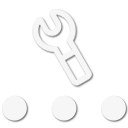Without sending you to a direct post, I can answer that like this;
1) Useful so you can talk to your buddies! I almost always have my camping buddy with me in his truck. If we did not have comms, we would not know when I need to pull over to pp again. Which honestly, is like every 10 minutes...
2) Getting started can be kind of mind blowing. The FCC has allocated us a few types of Radio Services that we can choose from: CB, amateur radio/ham radio. MURS. GMRS, and FRS. The real trick is trying to figure out which one you want and which one most of your buddies are going to be on. Cost is another consideration. Same for desire of a license.
- Ham radio needs a license and is the most expensive overall, but allows the most flexibility.
- CB does not need a license, is fairly cheap, but has lots of limitations in terms of communication range.
- FRS does not need a license, and the radios are inexpensive as well, but the "sound" is very clear!
- GMRS is kind of like FRS, but you need a license you pay for ($75 i think), but allows much more power and has the potential for 10s of miles of range. I think GMRS could be fairly described as a cross between UHF ham radio and FRS.
- MURS is another potential, but you are limited to just 5 descrete channels, and the radios are not as plentiful. I don't know anyone who uses MURS yet.
3) We normally, and I would suspect most others, use them just to talk to each other. In the past, an "emergency" was always another reason, but I think with the adoption of things like SPOT and inReach, a radio to call for help is getting left in the rear view mirror.
I have been into communications since the early 90s and currently do radio installs for local guys in East Tennessee. I've seen lots of stuff over the years and can help you (or anyone) out if you have more specific questions.





